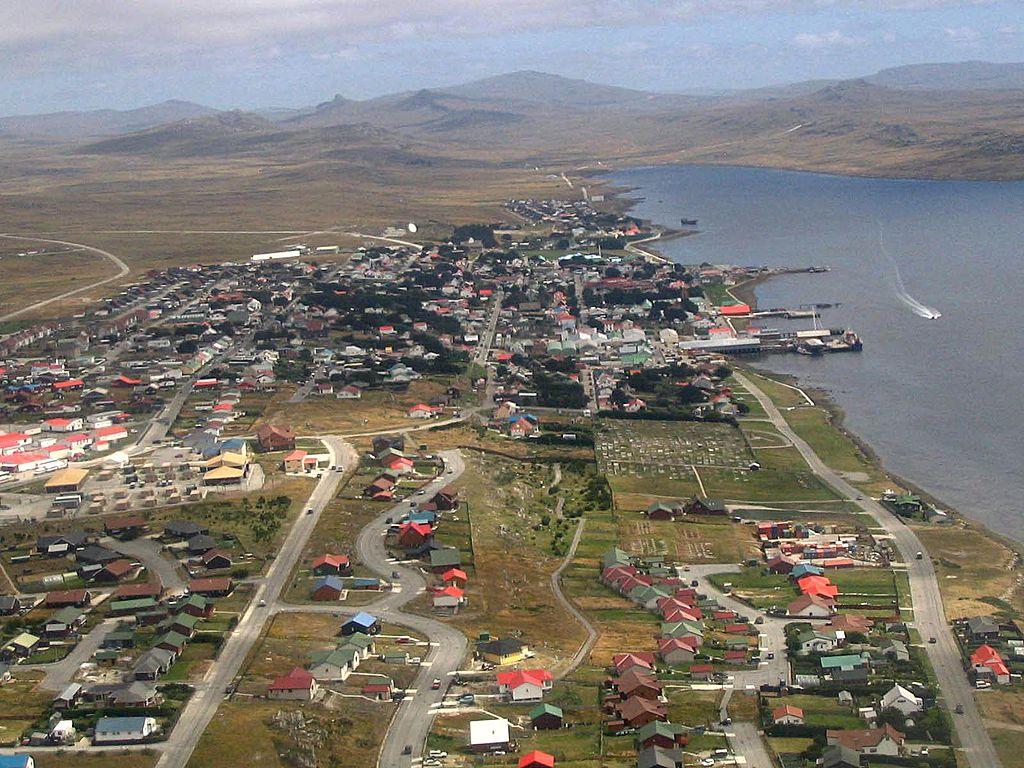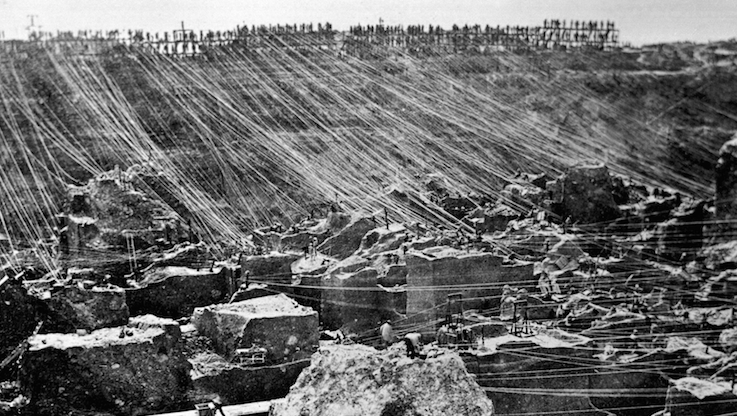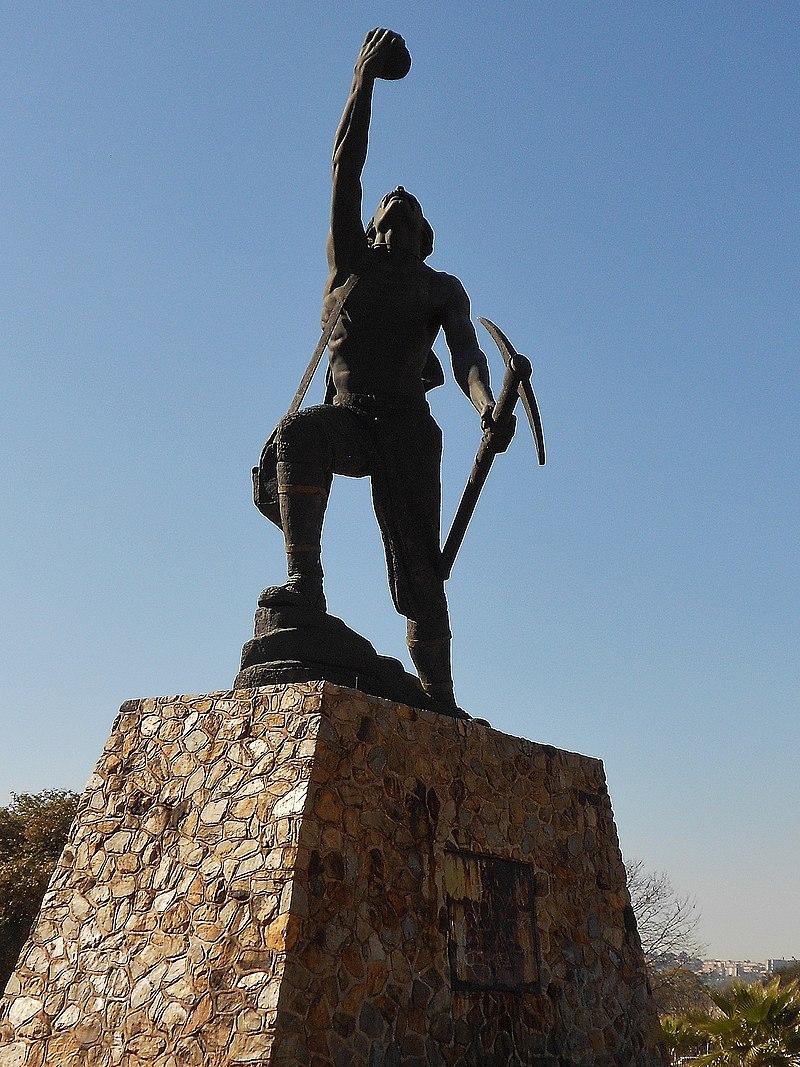Disclaimer: Any views expressed by individuals and organisations are their own and do not in any way represent the views of The Heritage Portal. If you find any mistakes or historical inaccuracies, please contact the editor.
In the article below, Graham Ross tells the story of Murrell Robinson Robinson, a man who made a significant contribution to the development of the Cape Colony. The piece first appeared in the publication 'Past Masters: Pioneer Civil Engineers who contributed to the growth and Wealth of South Africa'. Click here to view the stories of other great engineers.
Robinson was a conscientious and dedicated public servant who has the rare distinction of having an engineering work named after him - the Robinson Pass between Mossel Bay and Oudtshoorn is a tribute to the high regard in which he was held in the Colony.
Robinson Pass (DRISA)
Robinson was born in Southwark, England in 1820. Initially he worked as a surveyor, and in his early twenties served in the Falkland Islands with a small contingent of Royal Sappers and Miners, engaged in laying out the original capital Port Louis (renamed Anson) and then the new capital of Stanley. He became Private Secretary to the Lieutenant Governor, and was appointed Superintendent of the Survey Department. After some unfortunate personal differences had arisen, he was dismissed by the Executive Council and left the Islands, arriving in London in September 1845.
Aerial view of Port Stanley (Wikipedia)
He successfully overcame this setback by accepting an appointment as Second Assistant Surveyor-General in the Cape Colony at a salary of £300 per year. At that time Major Charles Michell held the combined post of Surveyor-General, Civil Engineer and Superintendent of Public Works (click here to read more about Michell). On Michell’s retirement in 1848 this post was split into those of the Surveyor-General and Civil Engineer and Robinson was promoted to First Assistant Surveyor-General.
In 1853, Robinson was posted to the Eastern Frontier, where he surveyed new farms for settlement. He also prepared the novel hexagonal plan for the new town of Queenstown, designed to allow easy defence in times of attack. During this time he began studying for his AMICE which was awarded in 1861. He obtained his MICE in 1870.
In 1858 the composition of the Central Roads Board was altered from six unpaid Commissioners to three paid commissioners, and the office of Chief Commissioner of Roads was combined with that of Civil Engineer. In the same year Robinson was appointed to the new unified post of Deputy Civil Engineer and Deputy Surveyor-General for public works in the Eastern Cape, stationed in Grahamstown, and the correspondence files show that his time was equally divided between building roads and gaols!
Two years later, in 1860, Robinson was back in the seat of government, Cape Town, as Deputy Colonial Engineer to the controversial John Scott Tucker, who recommended - incredibly, in a developing country - that the top post be abolished. Eventually in 1865 Robinson was appointed as Head of the Department, now titled Chief Engineer of Roads, Bridges and Buildings. His salary was £1000 per annum.
Although funds for public works had been drastically reduced since the heady days of Michell’s stewardship, development work was still the order of the day. Robinson directed the most productive years of Thomas Bain and other construction engineers such as Adam de Smidt and Patrick Fletcher.
The superlatively rich Kimberley diamond fields, discovered in 1871, acted as a magnet for fortune seekers, and there were rich pickings for coach operators and transport riders who could ferry people, equipment and provisions to the burgeoning mining camp.
Mining claims in Kimberley (De Beers Archive)
The rudimentary road system was put under pressure, but funds and technology for proper roads were lacking, and the dry, dusty, and uncomfortable journey was anything but pleasant. As the rail system expanded it offered better options and became the preferred system of travel, and it was further entrenched by the discovery of gold in the Transvaal. When Murrell Robinson left office in 1875 his post was further downgraded, and the Colonial Railway Engineer became the senior engineer at the Cape.
Statue commemorating the discovery of largest goldfield on earth (Wikipedia)
As a change from building gaols, Robinson built the Robben Island lighthouse, which had been designed by Tucker. He then himself designed the lights at Cape St Francis (the tallest masonry tower on the South African coast) and Bird Island, Algoa Bay, and assisted by a very competent clerk-of-works, Joseph Flack, he arranged for their construction.
Design for the lighthouse at Bird Islands signed by Robinson
Robinson married Miss Mary Anne Ebden of a well-known Cape family and produced two daughters. He retired and returned to England where he died in 1900. His contribution to the development of the economy of the Colony was considerable.
Graham Ross liked to call himself a "padmaker". Although in the early stages of his career he roughed it with the hardy band of men who built roads in the dry and dusty rural areas of the Cape Province, in later years, after becoming one of the first qualified geometric engineers in the country, he operated out of a Cape Town office complete with drawing board and calculating machine. On retirement he began compiling a database of the history of Cape Provincial roads and, particularly, of mountain passes, which would earn him a doctorate from Stellenbosch University. This entailed a great deal of travelling, photographing, interviewing and research. At about the same time the Transportation Division of SAICE asked him to organise a series of articles about the passes for inclusion in the SAICE Magazine. For the SAICE centenary in 2003 Graham was persuaded to expand his articles into a book for general readers, which he produced at short notice with his customary care and flair, and "The Romance of the Cape Mountain Passes" appeared in bookshops soon afterwards.
Comments will load below. If for any reason none appear click here for some troubleshooting tips. If you would like to post a comment and need instructions click here.




